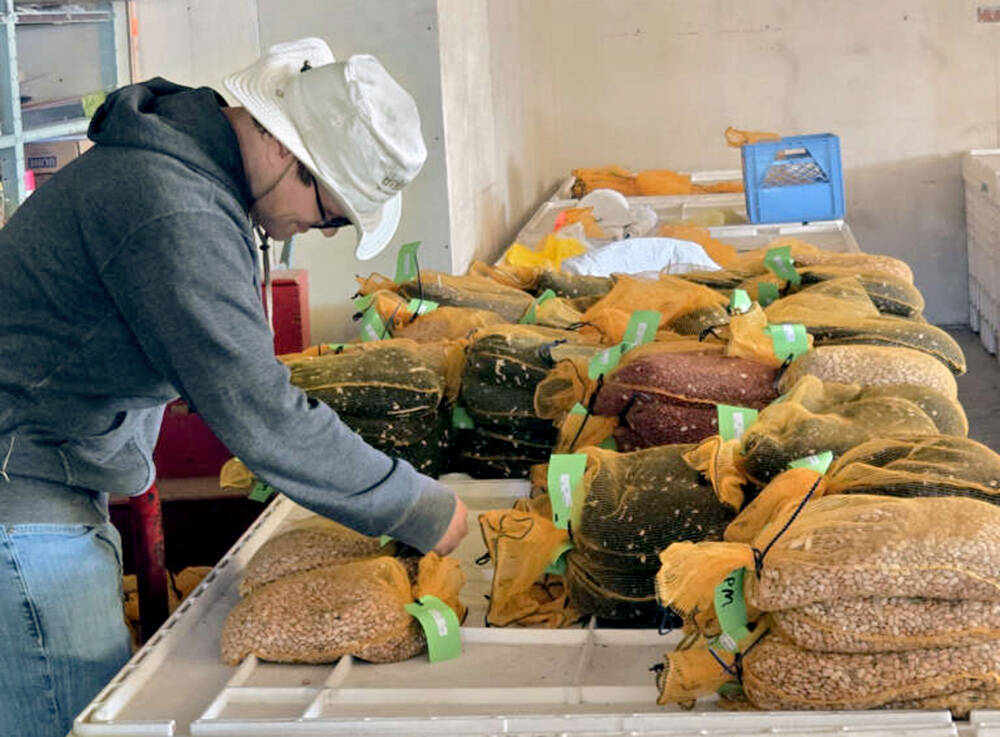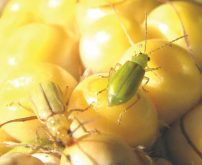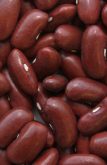Research results from the University of Guelph’s Ridgetown campus are equipping bean growers with new knowledge to make informed pest management decisions.
Chris Gillard, associate professor in the department of plant agriculture, leads an agronomy and pest management program and is focused on collaborating with growers to ensure the research is in line with their top management questions and concerns.
He presented his recent research at the Ontario Bean Growers research day at the organization’s Huron Research Station in Exeter.
Read Also

Bean research breeds community giving
University of Guelph dry bean researcher Dr. Mohsen Yoosefzadeh Najafabadi champions sustainability by donating surplus breeding program beans to support food security and community art initiatives.
[RELATED] Concerns grow over control-resistant pests
White mould
In a recent provincial survey, three-quarters of bean growers ranked white mould as their biggest problem.
When a grower is contacted by a company claiming to have a new product to control the disease, they typically ask Gillard for an independent assessment.
Why it matters: Researchers are evaluating pest management products and determining their most effective timing so growers can maximize return on investment and yield.
“We are looking at new products all the time and we carry out extensive testing,” says Gillard, noting at least four data points are generated before judgment is passed on a given product.
Based on results from 2018 to 2022, his research indicates six new products – Astound, Cotegra, Delaro, Maxim, Miravis and Priaxor – are average performers.
Three alternative products – Double Nickel, Oro-solute and Oxidate – have been deemed poor because they performed no better than if plants were untreated.
Gillard’s research confirms that Allegro and Propulse remain the top recommended fungicides to control white mould in dry beans.
Both products have a drastic impact on the disease, reducing severity by 34 to 50 per cent, increasing yield by 50 to 70 per cent and increasing grower return on investment from $335 to $1,040 per hectare.
“The survey shows growers are using our recommendations and this means that the information is valuable and the research is working,” says Gillard. “Finding out that a product doesn’t work is just as useful to growers as knowing what does work and how well it performs.”
Since the fungicide performance research is funded by bean growers, Gillard considers the data to be owned by growers and does not allow chemical companies to use his name or data for marketing purposes.
Western bean cutworm
Western bean cutworm is another major management concern. The moths are attracted to dry beans after the corn crop tassels.
“It’s a really difficult pest to deal with in beans because it’s basically impossible to scout for in the field,” Gillard says. “You have to look for the damage it causes and not the pest itself.”
He says growers will see some cutworm management recommendations soon, as M.Sc. student Josee Kelly is currently completing her second year of field trials. Her work is focused on infesting plots with western bean cutworm larvae at different stages and applying insecticides at different times to determine the most effective time for application.
Kelly is also using data from the provincial western bean cutworm trapping network and assessing counts by temperature and soil type to determine correlations.
Her analysis will be complete and summaries of her graduate study will be ready to share with growers in April 2023.












